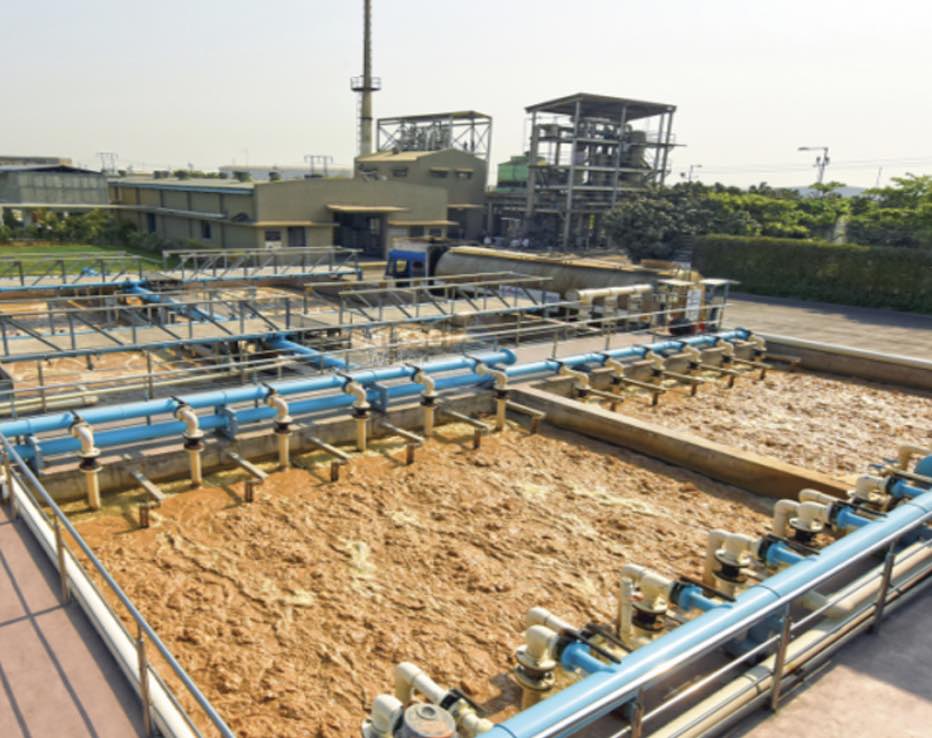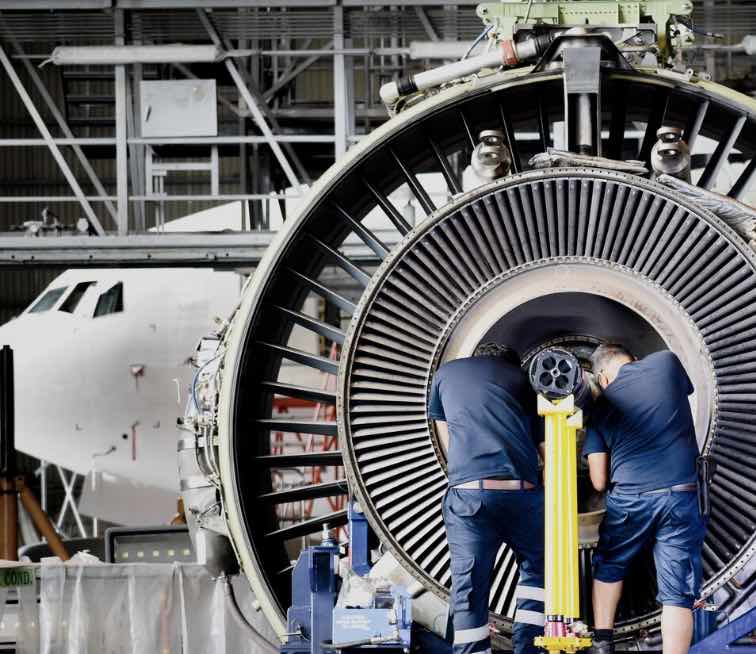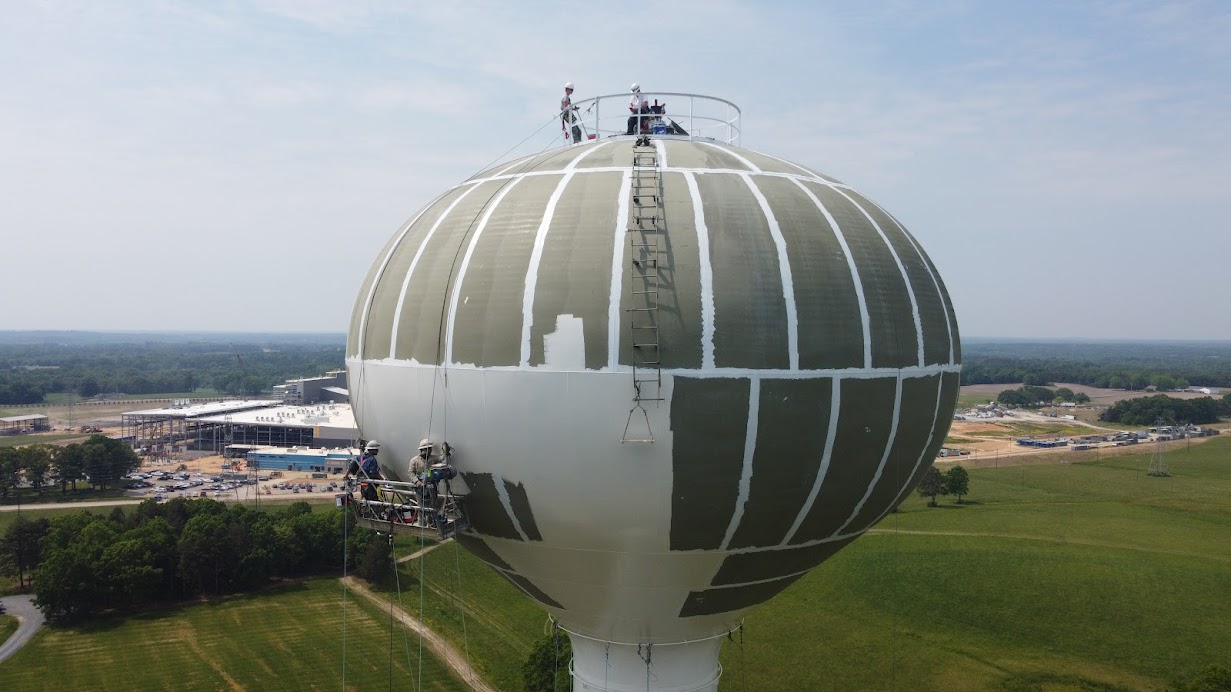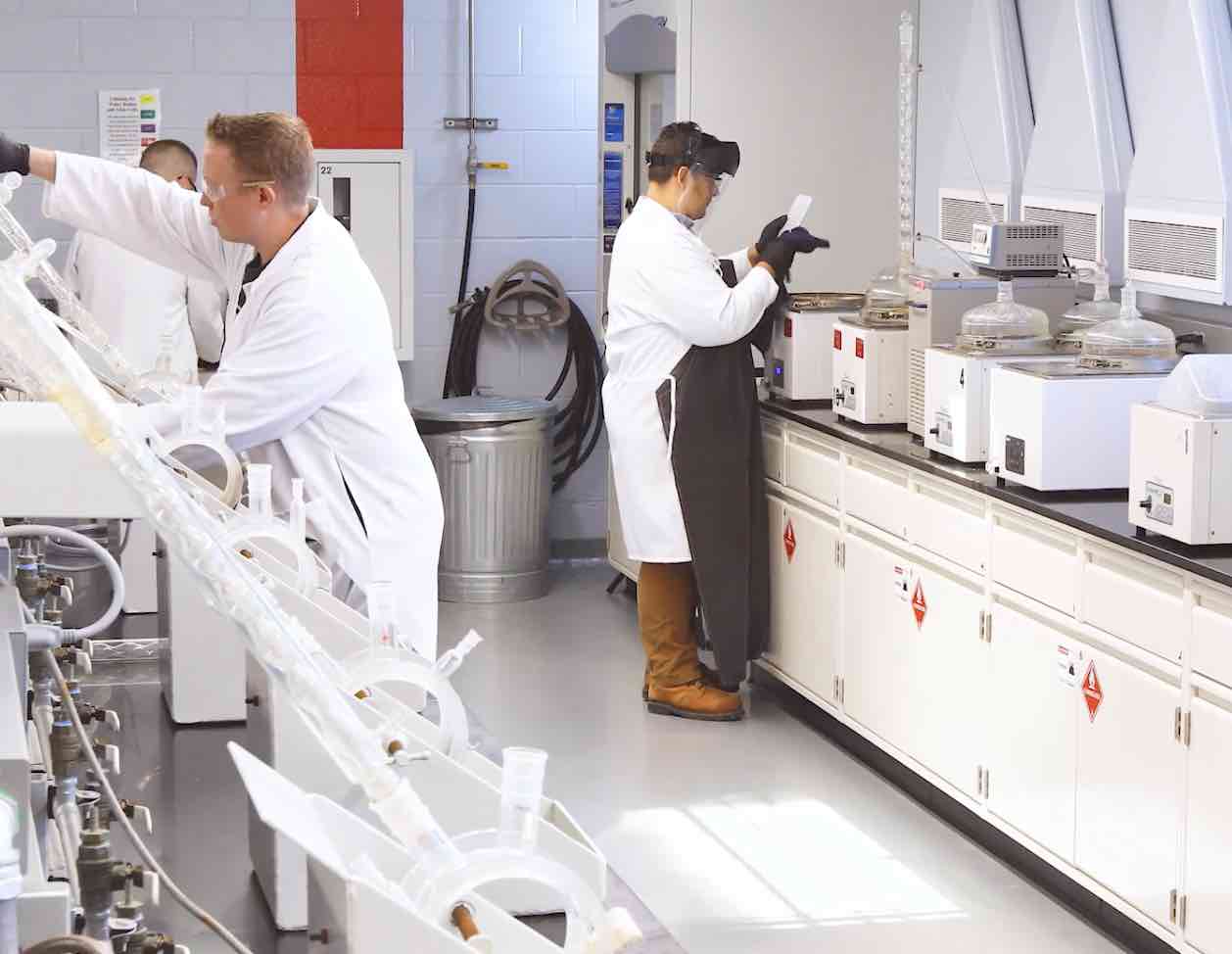
Maximizing the Performance of Membrane BioReactors
Explore the synergy between advanced wastewater treatment technologies and specialized protective coatings in enhancing system efficiency and durability.
- High Performance Coatings
Here we'll explore the innovative MBR technology and how specialized protective coatings like Tnemec Series 215/22 ML play a critical role
Maximizing the Coating Performance of Membrane BioReactors
Water is one of our most precious resources, and effective wastewater treatment is crucial for environmental protection and public health. As infrastructure ages and regulations become more stringent, treatment facilities are increasingly turning to advanced technologies like Membrane BioReactors (MBRs) to meet these challenges. Simultaneously, protecting the concrete and steel infrastructure of these facilities from the corrosive environment of wastewater treatment is vital for ensuring long-term operational success and cost-effectiveness. This blog explores the innovative MBR technology and how specialized protective coatings like Tnemec Series 215/22 ML play a critical role in preserving water treatment infrastructure.
Understanding Membrane BioReactors (MBRs)
What is an MBR?

A Membrane BioReactor combines conventional biological treatment processes (like activated sludge) with membrane filtration technology. This integration creates a sophisticated system that offers significant advantages over traditional wastewater treatment methods.
How MBRs Work
The MBR process consists of two primary components:
- Biological Treatment Zone: Similar to conventional activated sludge systems, microorganisms break down organic matter in the wastewater.
- Membrane Filtration Unit: Instead of using secondary clarifiers for solid-liquid separation, MBRs employ semipermeable membranes (typically microfiltration or ultrafiltration) to physically separate treated water from biomass.
The membrane modules can be configured in various ways:
- Submerged/immersed directly in the bioreactor
- Housed in a separate tank (sidestream configuration)
- Contained in pressure vessels (external configuration)
Advantages of MBR Technology
MBRs offer several significant benefits over conventional wastewater treatment:
- Superior Effluent Quality: MBRs can achieve effluent with virtually no suspended solids and significantly reduced bacterial counts, often eliminating the need for tertiary treatment.
- Compact Footprint: By eliminating secondary clarifiers and operating at higher mixed liquor suspended solids (MLSS) concentrations (typically 8,000-12,000 mg/L versus 2,000-3,000 mg/L in conventional systems), MBRs require 30-50% less space.
- Process Intensification: The higher biomass concentration allows for more effective treatment of higher-strength wastewaters and improved removal of nutrients like nitrogen and phosphorus.
- Operational Flexibility: MBRs handle flow and load variations more effectively than conventional systems.
- Potential for Water Reuse: The high-quality effluent makes MBRs ideal for water recycling and reuse applications.
Challenges of MBR Implementation
Despite their advantages, MBRs face several operational challenges:
- Membrane Fouling: The accumulation of materials on membrane surfaces restricts flow and requires regular cleaning with chemical agents.
- Energy Consumption: MBRs typically require more energy than conventional systems, primarily for membrane aeration and permeate pumping.
- Membrane Replacement Costs: Membranes have a finite lifespan (typically 7-10 years) and replacement represents a significant operational expense.
- Chemical Cleaning Requirements: Regular maintenance cleaning with chemicals like sodium hypochlorite and citric acid is necessary to maintain performance.
The Corrosive Environment of Wastewater Treatment Facilities

Water and wastewater treatment creates one of the most challenging environments for infrastructure materials. Several corrosion mechanisms are at work:
Chemical Corrosion
- Hydrogen Sulfide (H₂S): Anaerobic conditions in wastewater systems produce H₂S gas, which can dissolve in condensation on concrete surfaces and be oxidized by bacteria to form sulfuric acid (H₂SO₄).
- Chlorides and Disinfection Chemicals: Treatment chemicals like chlorine, sodium hypochlorite, and chlorine dioxide are highly oxidizing and corrosive to metals and concrete.
- pH Extremes: Both acidic and alkaline conditions in various treatment processes can accelerate concrete deterioration and metal corrosion.
Microbially Induced Corrosion (MIC)
Thiobacillus bacteria can convert hydrogen sulfide gas to sulfuric acid, which can reduce the pH on concrete surfaces to as low as 1.0, severely degrading concrete infrastructure.
Physical Stresses
- Abrasion: Grit, sand, and other particulates in wastewater create abrasive conditions.
- Hydraulic Forces: High-pressure flows and turbulence cause wear on surfaces.
- Thermal Cycling: Temperature variations between processes and seasons create expansion and contraction that stress materials.
The Role of Tnemec Series 215/22 ML in Protecting Water Treatment Infrastructure
Understanding Tnemec Series 215/22 ML

Tnemec Series 215 Surfacing Epoxy and Series 22 ML Epoxoline are specialized coating systems designed specifically for the unique challenges of water and wastewater treatment environments.
Series 215 Surfacing Epoxy
This 100% solids epoxy compound is designed for:
- Filling voids and bugholes in concrete
- Repairing deteriorated concrete surfaces
- Creating a smooth surface for topcoat application
- Reducing the number of pinholes in the finished coating system
Key properties include:
- High build capability (can be applied up to 1/4 inch thickness)
- Excellent adhesion to concrete and steel
- Chemical resistance to wastewater treatment environments
- Low shrinkage during curing
Series 22 ML Epoxoline
This modified polyamine epoxy coating provides:
- Exceptional chemical resistance to H₂S, H₂SO₄, and other corrosive compounds
- Resistance to immersion in both fresh and salt water
- Abrasion resistance for high-flow areas
- Long-term protection against MIC
- High-build characteristics for fewer required coats
Critical Applications in MBR Facilities
The unique environment of MBR systems creates specific areas where protective coatings are essential:
- Membrane Tanks and Chambers: These areas experience continuous immersion, potential chemical exposure from cleaning processes, and high aeration that can create abrasive conditions.
- Chemical Storage and Feed Areas: Protection against chemical spills from membrane cleaning agents like sodium hypochlorite and citric acid is critical.
- Headworks and Influent Channels: These areas often have high H₂S concentrations and are subject to significant abrasion from incoming solids.
- Effluent Structures: Even though effluent water is cleaner, these structures still require protection from continuous immersion.
Application Process and Best Practices


The successful application of Tnemec Series 215/22 ML involves several critical steps:
- Surface Preparation: Concrete surfaces require proper preparation to SSPC-SP13/NACE No. 6 with ICRI CSP 3-5 profile to ensure proper adhesion. Steel surfaces typically require SSPC-SP5/NACE No. 1 White Metal Blast Cleaning.
- Moisture Control: New concrete must cure for a minimum of 28 days, and moisture content should be verified prior to coating application.
- Temperature and Environmental Controls: Application should occur at temperatures between 50°F and 90°F (10°C-32°C) with proper humidity control to ensure optimum curing.
- Application Sequence:
- Apply Series 215 to fill voids and create a smooth surface
- Apply the first coat of Series 22 ML at 4.0-6.0 mils DFT
- Apply the second coat at 4.0-6.0 mils DFT for a total system thickness of 8.0-12.0 mils
- Quality Control: Proper wet film thickness measurements, holiday detection, and adhesion testing ensure coating integrity.
Long-term Performance Benefits
Proper application of the Tnemec Series 215/22 ML system provides numerous benefits for MBR facilities:
- Extended Service Life: Properly protected concrete and steel can last 15-20 years before requiring recoating, compared to 3-5 years for unprotected surfaces.
- Reduced Maintenance Costs: Preventing concrete deterioration and steel corrosion eliminates expensive repairs and downtime.
- Improved Operational Efficiency: Smooth, protected surfaces reduce friction, bacterial attachment, and hydraulic inefficiencies.
- Safety Enhancement: Eliminating deteriorated surfaces reduces workplace hazards and improves overall facility safety.
- Regulatory Compliance: Maintaining infrastructure integrity helps facilities meet permit requirements consistently.
Case Study: MBR Facility Protection
A municipal wastewater treatment plant in the Midwest upgraded to MBR technology in 2018 to meet more stringent effluent requirements and provide water for local industrial reuse. The facility implemented a comprehensive protection strategy using Tnemec Series 215/22 ML:
- The concrete membrane tanks were prepared and coated prior to membrane installation
- Chemical storage areas received additional coats for enhanced protection
- All concrete surfaces in the headworks were protected with the full system
- After three years of operation, coating inspection showed no signs of degradation despite the challenging environment (project details available on request).
The facility reported:
- No concrete deterioration in areas protected with the coating system
- Significant reduction in maintenance costs compared to their previous conventional treatment system
- Easier cleaning and maintenance of the MBR tanks during membrane maintenance procedures
- Estimated extension of infrastructure life by at least 15 years
Conclusion
As water treatment facilities continue to adopt advanced technologies like Membrane BioReactors, protecting the underlying infrastructure becomes increasingly critical. MBRs represent a significant advancement in wastewater treatment technology, offering superior performance in a smaller footprint, but they also present unique challenges for infrastructure protection.
Specialized coating systems like Tnemec Series 215/22 ML play an essential role in ensuring the long-term success of these facilities by protecting concrete and steel from the highly corrosive conditions present in wastewater treatment. By implementing proper surface preparation and coating application procedures, facilities can significantly extend their service life, reduce maintenance costs, and ensure consistent regulatory compliance. We can help!
LET OUR KNOWLEDGE AND EXPERTISE HELP ENSURE YOUR NEXT PROJECT IS SUCCESSFUL

Exploring High Performance Coatings in Aerospace...
Aerospace engineering demands exceptional...

What Should I know before putting a potable water...
What may seem obvious, should be done before...

How Should I Determine Which Coating to Use and...
Laboratory testing data and project case...